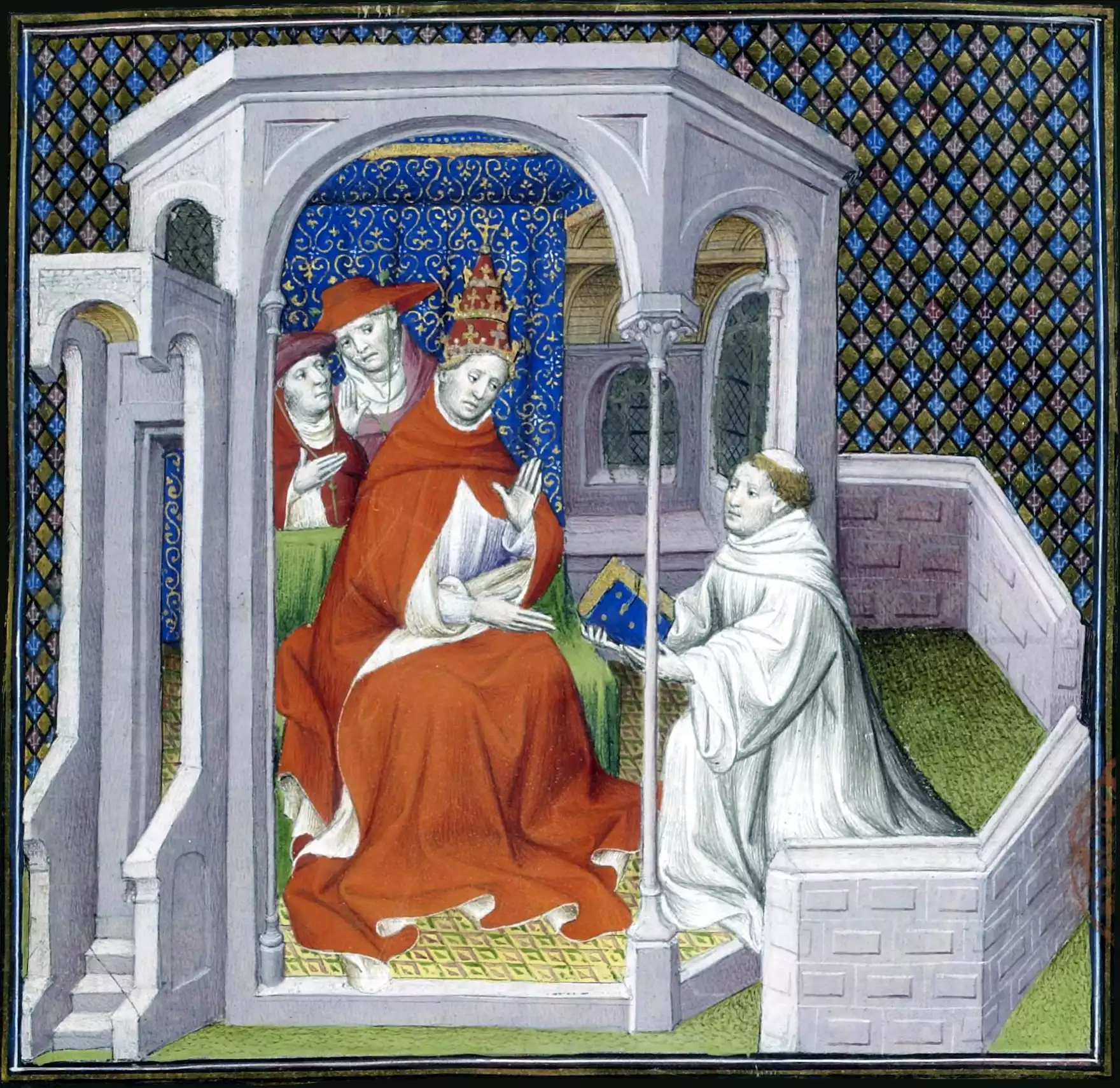
In the early 14th century, Pope Clement V made several controversial decisions that dramatically impacted the Catholic Church. Born around 1264, Clement was elected pope in 1305. During his papacy, he famously moved the Holy See to Avignon and initiated the suppression of the Knights Templar.
The Move to Avignon
At the beginning of his pontificate, Clement decided to move the papacy from Rome to Avignon. This initiated the period known as the Avignon Papacy, when the pope resided in France instead of the Eternal City. Some historians believe Clement made this move due to pressure from the French king, while others argue it was due to unstable conditions in Rome. The decision was monumental, as the papacy remained in Avignon for nearly 70 years before returning to Rome. Though necessary at the time, the move was criticized by Italian poet Petrarch, who called Avignon the “Babylon of the West.” Despite the backlash it caused, relocating to Avignon solidified Clement’s ties to the French crown.
The Dissolution of the Knights Templar
The most infamous decision of Pope Clement V’s papacy was the suppression of the Knights Templar. Founded in 1119 to protect pilgrims traveling to the Holy Land, the Templars had grown exponentially in size, wealth, and power. By the early 14th century, the order had become indispensable to the papacy and European nobility due to its extensive financial holdings. Some monarchs, including French King Philip IV, began eyeing the Templars’ riches and sought to seize their assets by disbanding the order.
To achieve this goal, Philip pressured Pope Clement to investigate allegations of heresy and blasphemy among the Knights Templar. In 1307, Clement finally acquiesced and instituted an inquiry into the ancient order. Despite lack of evidence, in 1312, he officially dissolved the Knights Templar with the papal bull Vox in excelso. The order’s properties across Europe were transferred to the Knights Hospitaller, while its last Grand Master, Jacques de Molay, was burned at the stake in 1314.
Though Clement aimed to appease the French crown, his decision to disband the powerful Templars caused immense backlash. It is widely considered one of the most notorious acts of his papacy. However, suppressing the order also allowed Clement to redistribute their wealth and property according to his own interests. Despite protests at the abolition of such an old Crusading order, the end of the Knights Templar marked a major shift in papal power under Pope Clement V.
Clement’s Legacy
Pope Clement V’s controversial papacy left a complex legacy. Though he made unpopular decisions like suppressing the Templars, he also helped reform the Curia and administration of the Catholic Church. Clement centralized control under the pope, codifying papal procedures in his constitutions Clementinae. He continued efforts to end the Byzantine schism, ultimately helping reunify the Eastern and Western Churches at the Council of Lyon. Clement also imposed stricter standards on bishops and worked to reform monastic orders.
However, his lavish Pontifical Court and unwillingness to return to Rome drained the Papal Treasury. Critics accused him of being too easily swayed by secular monarchs, especially France’s Philip IV. Yet Clement also stood up to Philip by absolving the late Pope Boniface VIII, whom Philip had persecuted. Despite allegations of corruption, Clement aimed to reform the Church and strengthen the papacy. Though his controversial acts earned criticism, he helped shape the future of the Catholic Church and the Avignon Papacy.
Conclusion
The pontificate of Clement V was defined by paradoxes. His controversial decisions, like suppressing the Templars and leaving Rome, shocked Christendom. However, Clement also instituted key reforms, cracked down on heresy, and asserted papal power. For better or worse, his actions had an immense impact on the 14th century Church. Clement’s papacy marked a turning point, where the Pope became more vulnerable to secular pressures than ever before. While criticized by many, Pope Clement V remains a transformative, if controversial, figure in Church history. His legacy continues to be debated by historians centuries after his death.
Referenses
Chronica; Monumenta Germaniae Historica, Hanover; Monumenta Germaniae Historica, 1920.
The Catholic Encyclopedia; Robert Appleton Company, New York; Robert Appleton Company, 1907.
Women and Gender in Medieval Europe; Bloomsbury Publishing, London; Bloomsbury Academic, 2019.
Avignon Papacy; Encyclopaedia Britannica, London; Encyclopaedia Britannica Inc., 2020.
Philip IV of France; Encyclopaedia Britannica, London; Encyclopaedia Britannica Inc., 1998.
